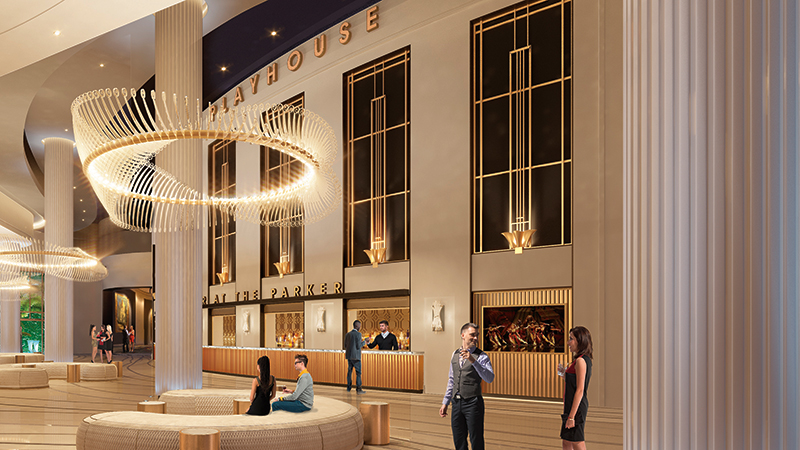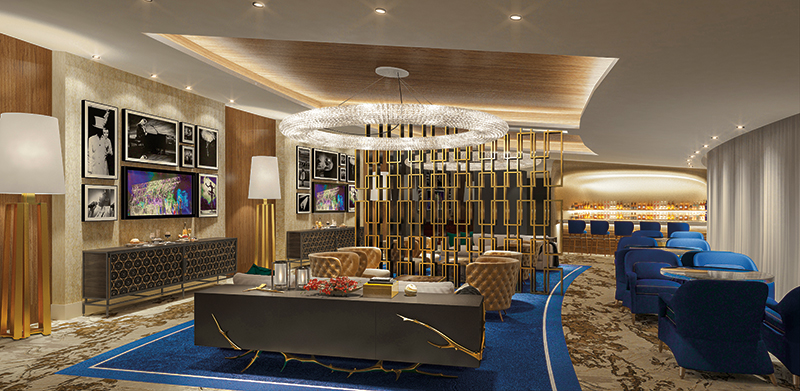
Like many people who grew up in Broward County, George LeMieux remembers the first time he went to Parker Playhouse.
“When I was a kid my mom took me there to see Camelot,” the former U.S. senator says. “I went there to see several shows as a kid, and it was special. It’s still special.”
Now, Lemieux is part of a group aiming to keep it special. He chairs the Campaign for the Parker, an ambitious project that will see Parker close in May and remain closed until the start of the 2020–21 season. In that time, the landmark theater will undergo a renovation that will involve both technical upgrades and new or reworked spaces meant to give theatergoers a little something more.
Included in the project will be new lounges, bar areas and other hospitality spaces including a downstairs bar that LeMieux calls a kind of speakeasy. The current façade will move indoors as an airy new lobby is added onto the front.
Other upgrades will be more technical and behind-the-scenes. Acoustical and other equipment will be upgraded and a number of basic repairs will be made.
LeMieux calls Parker, which opened in 1967, an iconic property. But even icons need a touchup now and then.
“It’s a little tired; it needs a refresh,” he says. “Once we do this upgrade, it gives us three state of the art facilities where we can house any kind of event.”
Throughout the refurbishment, the people behind it are conscious of adding to the playhouse without taking away what patrons love about it in the first place. “We’ve really been taking that seriously throughout the design process,” says Kelley Shanley, President and CEO of the Broward Center for the Performing Arts. Though physically separate, Parker operates as part of the Broward Center. “What you have is a building that has such great charm and history to it. It’s got a unique attitude. You want to be true to all of that while also trying to position the Parker Playhouse to be ready for audiences and artists of today.”
Today’s audiences have changed. In years past, theatergoers drove to the edge of Fort Lauderdale’s quiet downtown, parked, saw a show and went home. Now as areas like Flagler Village grow, many more people live within walking distance of the theater. Arts districts just across Federal Highway attract people to new bars and cafes. People do more in the areas around Parker; it stands to reason they might want to do more at Parker.
Shanley notes that two other South Florida theaters, similar to the Parker in many ways, have not shared its good fortune. Palm Beach County’s Royal Poinciana Playhouse languishes in disrepair, while Miami’s Coconut Grove Playhouse has sat dormant for years. There was a time when it looked like Parker might succumb to that fate as well. In the 1990s, the theater scene was changing. In the ’60s, when Dr. Louis Parker built his theater (remarkably, this took nine months) and brought in producer Zev Buffman to provide seasons of Broadway shows, a theater like Parker worked perfectly as a venue for touring musicals.
However, by the ’90s, all that was changing. Shanley says it’s wrong to assume the Broward Center, which opened in 1994, made Parker less viable. If anything, it’s sort of the other way around. “The Broward Center would not be here, I would say, if it were not for Dr. Parker taking the step of building Parker Playhouse, because that put Fort Lauderdale on the Broadway map,” he says.
But a changing Broadway did start to make Parker obsolete. The trend towards larger, more elaborate productions – think Phantom of the Opera or Les Miserables – meant touring productions needed bigger spaces. The Broward Center’s 2,600-seat Au-Rene Theatre could accommodate that. Parker couldn’t. So for a few years, the old theater sat almost entirely dark.
Then the Broward Center brought it into the fold and began bringing different kinds of shows. Today’s Parker still has “Playhouse” in the name, but you’re much more likely to see a band, a dance troupe or a comedian in it. Shanley says that size-wise, the 1,100-seat Parker fits perfectly between the Au-Rene and the Broward Center’s smaller theater, the 500-seat Amaturo.
“It’s living a great sort of second life,” Shanley says. The refurbishment, he says, won’t really affect the types of acts that appear in it.
In the years since the Broward Center took over the Parker, there have been small improvements and repairs here and there. But until now, it’s mostly stayed as it was. And it’s become busy. For Shanley, that’s the proof that this project is a good idea. If they can make it work without improvements, just imagine what it can be with them.
“I think Parker Playhouse is exceptional in its story for primarily one reason and that is that we have stepped into the facility as it was and proven it can be an active and valuable asset to the community right now,” he says. “That proves it’s worthy as an investment.”













